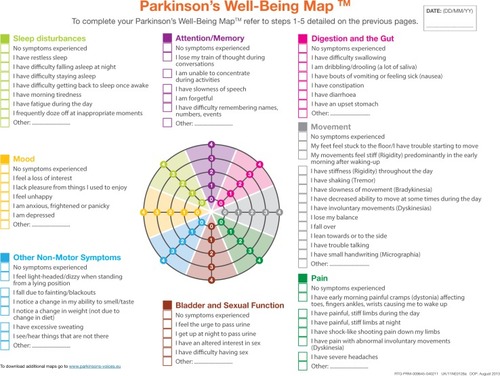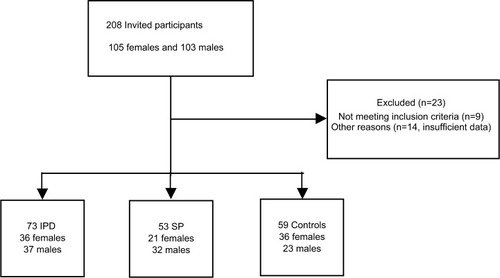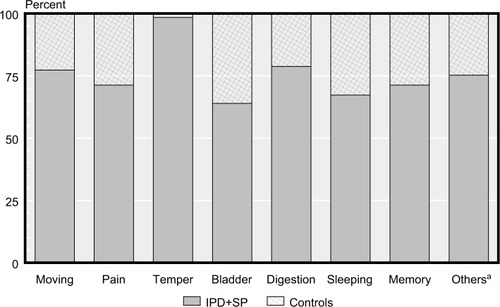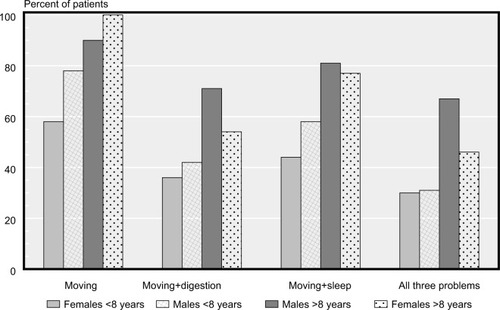Figures & data
Figure 1 The Parkinson’s Well-Being Map™ (The English version of the WBM™ is a trademark of UCB Pharma S.p.A. ©2013 UCB Pharma S.p.A. All rights reserved) categories of symptom complexes illustrated by different colors.

Figure 2 Inclusion and exclusion of participants into the study.

Table 1 Characteristics of the study population
Table 2 Dopamine replacement therapy and comorbidity of study patients expressed by drug profiles
Figure 3 Differences in MS and NMS by group between controls and (IPD + SP).
Abbreviations: IPD, idiopathic Parkinson’s disease; MS, motor symptoms; NMS, non-motor symptoms; SP, secondary Parkinsonism.

Figure 4 Frequencies of reported clusters symptoms (%) between IPD and SP groups.
Abbreviations: IPD, idiopathic Parkinson’s disease; SP, secondary Parkinsonism; invol., involved; ICS, Impulsive Control Disorder.

Figure 5 Prevalence in percent for reported problems of moving and/or combined MS and NMS disorders (digestion and/or sleeping problems) in the (IPD + SP) groups split by gender and duration of disease (cutoff ≥2, where 0= no symptoms, 4= maximal symptoms).

